Do Solar Lights Work on Rainy Days? A Comparison of Different Light Types
Many homeowners worry that their solar lights won’t work on rainy days — especially during long stretches of cloudy or wet weather. It’s a fair concern: solar energy depends on sunlight, and when skies are gray, it’s easy to assume your garden or wall lights might stay dark. But the truth is more nuanced. Modern solar lighting systems are designed to perform even under low-light conditions. Let’s explore how they work and which types handle rainy days best.

How Solar Charging Works on Cloudy Days
Solar panels don’t need direct sunlight to generate electricity. They convert light energy — not heat — into power. On cloudy or rainy days, the light intensity drops, but the panels can still capture diffused sunlight and produce a smaller charge.
However, the charging efficiency can fall to 10–25% of the normal rate, depending on the thickness of cloud cover and the quality of the solar panel. High-efficiency monocrystalline panels usually outperform polycrystalline ones in weak sunlight, maintaining a steady, if reduced, charging rate.
Key takeaway:
- Solar lights do charge on rainy days, but more slowly.
- Efficient panels and smart energy management help maintain brightness.
Performance Comparison: Different Types of Solar Lights
Not all solar lights react the same way to poor weather. Their performance depends on panel size, light purpose, and energy demand.
1. Pathway Lights: Reliable Under Gray Skies
- Design: Usually feature small panels and low-power LEDs.
- Performance: Since they consume little energy, pathway lights often continue to function throughout rainy stretches.
- Why it matters: They require minimal charging to stay lit for several hours, making them one of the most reliable outdoor options.
2. Wall Lights: Steady Output and Larger Panels
- Design: Typically mounted on walls or fences with larger solar panels angled to catch maximum daylight.
- Performance: Even in cloudy weather, wall lights can store enough charge for nighttime illumination.
- Extra advantage: Many include motion sensors, activating only when needed, which conserves stored power.
3. Decorative Solar Lights: Most Affected by Rain
- Design: Meant for ambiance, not illumination; often use smaller batteries and panels.
- Performance: Decorative lights tend to dim or stop working after several consecutive cloudy days because of limited storage capacity.
- Recommendation: If aesthetics matter, choose models with replaceable batteries or external panels to extend their usability.
The Role of Battery Storage
Even with reduced charging, a good battery storage system can keep solar lights running for multiple days. This is where the technology truly makes a difference.
Take, for example, the Bitpott high-capacity battery, which is engineered to store enough energy for several nights of illumination. Unlike standard lithium cells, Bitpott’s advanced design maintains voltage stability even when partially charged — a key advantage in rainy seasons.
Battery tips:
- Opt for lights with 2000–3000 mAh lithium batteries for extended performance.
- Avoid Ni-MH batteries in humid climates; they degrade faster.
- Recharge batteries manually via USB (if supported) during long rain periods to preserve brightness.
To explore battery options like the Bitpott model, you can check Bitpott amazon shop.
Smart Light Control: Optimizing Power Use
Smart lighting systems now use auto-sensing and delay features to extend battery life. These lights detect ambient brightness and activate only when needed, reducing unnecessary drain.
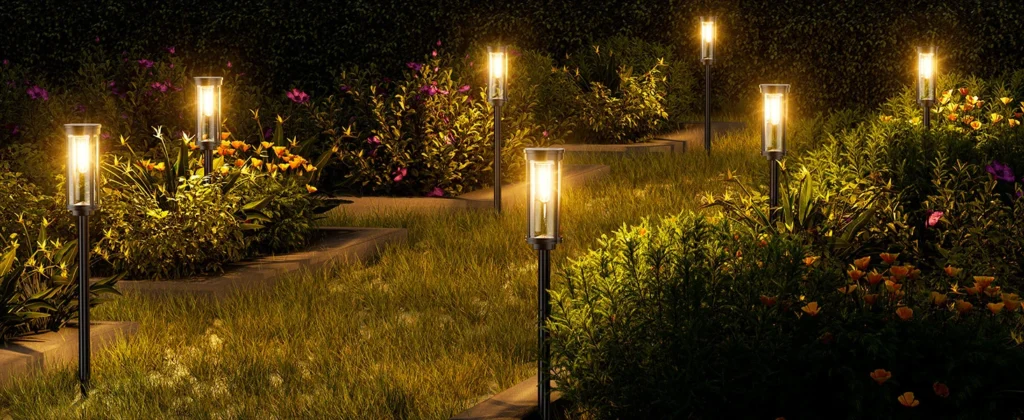
Advanced control features include:
- Light Sensor Mode – Turns on automatically at dusk and off at dawn.
- Motion Sensor Mode – Activates full brightness only when movement is detected.
- Delay Start Technology – Prevents false activation during temporary cloud cover, preserving stored energy.
By optimizing light behavior, these systems ensure that even when charging is limited, you still get consistent nighttime illumination.
Practical Tips for Using Solar Lights in Rainy Seasons
To maximize the performance of your solar lights during cloudy or rainy weather, a few small adjustments go a long way.
- Position the Panels Wisely
- Install solar panels facing south (in the Northern Hemisphere) at a 30–40° tilt for best exposure.
- Keep Panels Clean
- Dirt, dust, or water stains can reduce energy absorption by up to 20%.
- Manually Switch to Energy-Saving Mode
- During continuous rain, use low-brightness or motion-only modes.
- Turn Off Lights Occasionally
- In extended cloudy periods, turn off your lights for a day or two to let them recharge fully.
- Store Removable Lights Indoors
- For portable models, bring them indoors to preserve battery life and prevent moisture damage.
These small steps help ensure your solar lighting system stays functional even through unpredictable weather.
Long-Term Durability and Design Considerations
High-quality solar lights come with waterproof housings (IP65 or above), ensuring safe operation in wet environments. Stainless steel or ABS plastic bodies resist corrosion, while sealed circuitry prevents short circuits.
When selecting new models, prioritize:
- Efficient solar panels (monocrystalline preferred)
- High-capacity lithium batteries
- Weatherproof build (IP65–IP67)
- Smart light control features
Combining these factors ensures consistent brightness and durability, even in areas with frequent rainfall.
Reliable Solar Lighting, Rain or Shine
So, do solar lights work on rainy days? Yes — though performance varies by type and quality. Pathway and wall lights remain dependable under cloudy skies, while decorative options may dim sooner. The key lies in choosing products with efficient panels, strong battery storage, and intelligent control systems.
Models like those equipped with Bitpott high-capacity batteries demonstrate that even during extended rainy periods, solar lights can remain a reliable, eco-friendly choice for outdoor illumination.
In short:
- Cloudy days reduce charge efficiency, not functionality.
- Choose energy-smart lights for consistent performance.
- Regular maintenance and smart use extend lifespan.
With thoughtful selection and care, your solar lights can shine bright — no matter the weather.

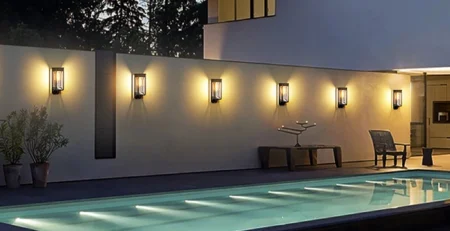
-2-450x231.webp)

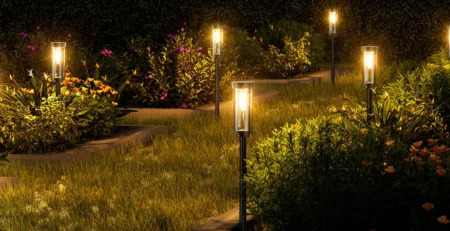

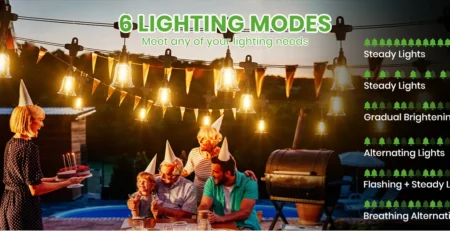


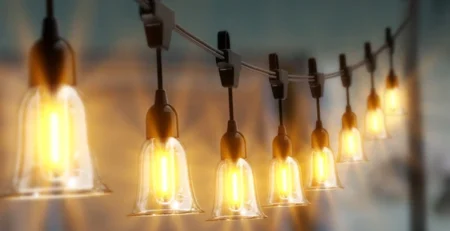

Leave a Reply